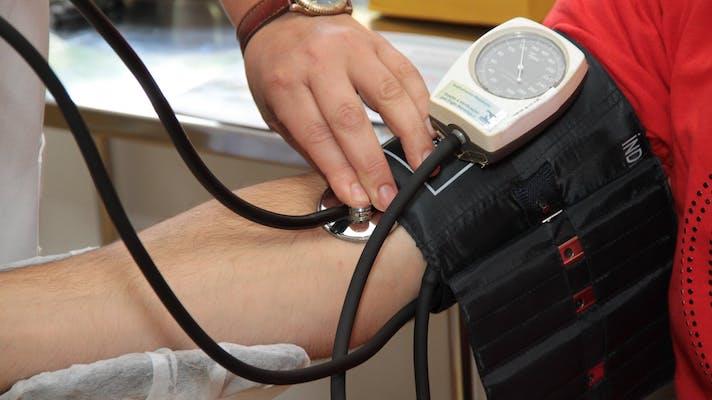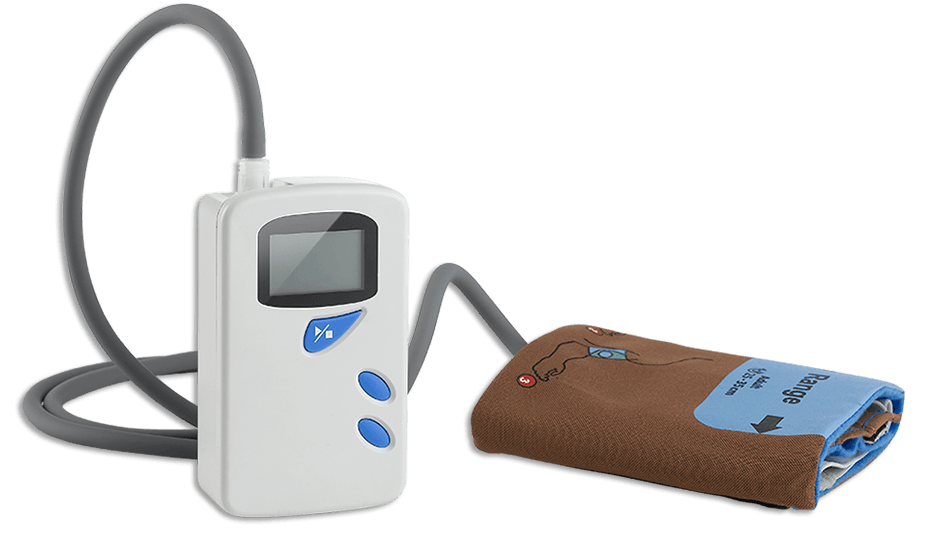Why You Ought To Consider the ABPM Test for Comprehensive Cardiovascular Health And Wellness
The ABPM test supplies a comprehensive strategy to monitoring blood pressure over a full night and day. Unlike typical approaches, it catches variants in blood pressure during numerous tasks, including rest. This continual monitoring can reveal issues like white coat syndrome and nocturnal high blood pressure. Comprehending these subtleties is necessary for effective high blood pressure management. However, the effects of these findings can considerably affect therapy techniques. What understandings might this monitoring expose regarding your cardiovascular health and wellness?
What Is Ambulatory Blood Pressure Monitoring (ABPM)?

The Significance of Constant Blood Pressure Tracking
Continuous blood pressure monitoring is essential for comprehending an individual's cardio wellness, as it reveals patterns and variations that might go undetected during occasional measurements. Conventional methods usually record a single analysis, which can be affected by temporary aspects like stress or exercise. On the other hand, continuous monitoring supplies a substantial sight of blood pressure variations throughout day-to-day routines, allowing for better analysis of high blood pressure and other cardiovascular risks.This recurring information collection is crucial for identifying nocturnal hypertension, white coat disorder, and other abnormalities that could bring about misdiagnosis if reliant entirely on occasional readings. Moreover, continual tracking help medical care suppliers in tailoring treatment plans much more properly, making certain that treatments are timely and suitable. By capturing a larger variety of data, continuous blood pressure monitoring enhances the understanding of an individual's special blood pressure profile, ultimately contributing to enhanced cardio health and wellness end results.
Advantages of ABPM Over Conventional Measurements
While standard blood pressure measurements supply useful understandings, they often stop working to capture the full spectrum of a person's blood pressure dynamics. Automated Ambulatory Blood Pressure Monitoring (ABPM) supplies a number of advantages over these traditional approaches. To start with, ABPM gauges blood pressure at routine periods throughout the day and evening, recording fluctuations that take place during day-to-day tasks and sleep. This constant monitoring aids to provide a more exact depiction of a person's blood pressure profile.Secondly, ABPM can recognize patterns such as white coat disorder, where people show raised readings in a scientific setup however have typical degrees beyond it. This capability makes it possible for health care professionals to make more enlightened decisions pertaining to diagnosis and therapy. In addition, ABPM is much less prone to the variability presented by a solitary dimension taken in a medical atmosphere, improving the dependability of hypertension analyses. On the whole, ABPM stands for a considerable advancement in the analysis of cardiovascular health.
Recognizing Covert Hypertension With ABPM
Ambulatory Blood Pressure Monitoring (ABPM) supplies constant blood pressure analyses, providing insights right into both daytime and nighttime variations. This approach is particularly effective in determining covered up hypertension, a condition where individuals display typical analyses in medical setups however have raised degrees outside of them. By capturing these variations, ABPM improves the understanding of an individual's true cardio health and wellness.
Continual Blood Pressure Monitoring
Blood pressure variations throughout the day can frequently mask underlying high blood pressure, making it important to use sophisticated monitoring methods. Constant blood pressure monitoring, such as Ambulatory Blood Pressure Monitoring (ABPM), supplies an extra precise photo of an individual's cardio health. Unlike standard techniques that record readings at a single moment, ABPM measures blood pressure at routine intervals over 24 hours, permitting the discovery of patterns and variations that could show concealed high blood pressure. This technique can determine circumstances of "white layer syndrome," where stress and anxiety throughout medical sees alters readings. By revealing these variations, continuous monitoring empowers healthcare providers to make enlightened choices pertaining to medical diagnosis and treatment, eventually improving individual care and promoting better cardio wellness results.
Daytime vs. Nighttime Readings
How can the timing of blood pressure analyses disclose concealed high blood pressure? The difference in between daytime and nighttime analyses is important in identifying variations that might suggest underlying health and wellness problems. Blood pressure usually adheres to a diurnal pattern, being greater during the day and lower at night. However, some people show abnormal patterns, such as non-dipping or reverse-dipping, where nighttime readings stay elevated. This phenomenon can suggest a raised cardio threat that standard workplace measurements could overlook. Ambulatory Blood Pressure Monitoring (ABPM) gives continual information, allowing clinicians to assess these variations accurately. By analyzing both daytime and nighttime blood pressure degrees, doctor can reveal covert high blood pressure, allowing much more efficient monitoring techniques tailored to individual person demands.
Masked High Blood Pressure Discovery
Masked high blood pressure, a condition where people present typical blood pressure readings in a scientific setup yet experience raised degrees in day-to-day live, poses substantial obstacles in cardiovascular health and wellness management. Traditional workplace measurements might fall short to recognize this hidden danger, resulting in possible misdiagnoses and insufficient therapy. The Ambulatory Blood Pressure Monitoring (ABPM) test provides a solution by continually tracking blood pressure over 24 hours, recording changes that take place throughout day-to-day activities. This extensive approach enables health care service providers to find masked hypertension efficiently, making it possible for prompt intervention. By identifying people at risk, ABPM adds to a lot more tailored treatment techniques, ultimately lowering the probability of cardiovascular events. Stressing the value of ABPM can lead to improved patient end results and better administration of hypertension-related problems.
How ABPM Can Impact Treatment Strategies
Ambulatory more info here blood pressure monitoring (ABPM) gives essential insights that can notably influence treatment strategies for hypertension. By determining patterns in blood pressure fluctuations, doctor can make customized medication changes to better fulfill specific person needs. In addition, boosted blood pressure checking through ABPM enables more effective monitoring techniques, eventually improving cardio health outcomes.
Individualized Medicine Adjustments
What happens if a client's blood pressure analyses could bring about more tailored treatment approaches? The Ambulatory Blood Pressure Monitoring (ABPM) test supplies health care specialists with in-depth insights right into a person's blood pressure patterns over 24 hours. ABPM test in Bangalore. This info enables clinicians to make informed choices concerning drug adjustments, ensuring that treatments are customized to the person's special requirements. Understanding when an individual experiences hypertension-- be it throughout daytime tasks or nighttime-- allows for more effective medicine scheduling and does. By lining up treatment strategies with actual blood pressure actions, ABPM facilitates much more precise management of high blood pressure, eventually enhancing client results. Such customized approaches can improve adherence to treatment and lower the risk of cardiovascular complications

Identifying Hypertension Patterns
Comprehending high blood pressure patterns is important for efficient therapy, as the ABPM test discovers variants in blood pressure throughout a person's day-to-day regimen. This constant monitoring enables health care providers to determine certain times when blood pressure spikes or declines, disclosing potential triggers or adding variables. By identifying these patterns, medical professionals can tailor treatment strategies much more successfully, making certain that drugs are maximized to handle blood pressure variations. Individuals that experience nocturnal hypertension may benefit from various medication schedules contrasted to those with early morning spikes. Furthermore, comprehending specific variability enhances client involvement in their treatment, cultivating adherence to lifestyle modifications. Ultimately, ABPM provides a detailed sight, promoting more educated scientific decisions and improving total cardiovascular health and wellness results.
Enhancing Blood Pressure Monitoring
While traditional blood pressure measurements give useful insights, the ABPM test noticeably boosts monitoring by recording data over a 24-hour period. This continuous monitoring allows doctor to observe blood pressure changes during various everyday tasks and sleep, using a complete sight of a client's cardiovascular wellness. By identifying patterns such as nocturnal hypertension or white layer disorder, medical professionals can tailor therapy plans better. Exact data from ABPM can lead to timely interventions, adjustments in drug, and way of living suggestions, this page inevitably enhancing individual outcomes. In addition, the objective nature of ABPM results helps in reducing the probability of misdiagnosis, making sure that individuals receive ideal care based upon their real blood pressure profile. This ingenious technique is reshaping hypertension management.
Comprehending Your Blood Pressure Patterns
Blood pressure patterns can expose substantial understandings into a person's cardiovascular health and wellness, as fluctuations may suggest underlying problems or reactions to way of life modifications. Regular monitoring of blood pressure can help in determining these patterns, which include variants during the day, nighttime dips, and responses to stress and anxiety or physical activity.For instance, a regularly raised reading may suggest high blood pressure, while substantial drops can indicate issues such as orthostatic hypotension. Furthermore, understanding circadian rhythms in blood pressure can highlight irregular patterns that might be linked to rest problems or cardio diseases.Moreover, identifying exactly how way of life factors like diet regimen, exercise, and medication adherence impact blood pressure can empower people to make informed decisions regarding their health (ABPM test in Bangalore). Eventually, a comprehensive evaluation of these patterns via approaches like Ambulatory Blood Stress Monitoring (ABPM) can supply a clearer photo of one's cardio status, leading effective administration and treatment strategies
Planning for Your ABPM Test: What to Anticipate

Just how should individuals plan for their Ambulatory Blood Pressure Monitoring (ABPM) test? They need to consult their healthcare supplier to understand any type of specific instructions or medicines that may need adjustment prior to the test. It is necessary to preserve a normal routine, preventing excessive caffeine and alcohol, as these materials can impact blood pressure readings. Individuals ought to also use loose-fitting garments to fit the monitoring device comfortably.On the day of the test, individuals can expect to have a little, mobile display connected to their arm, which will take readings at routine intervals over 24 hr. It is vital to maintain a diary of activities and signs throughout this period, as this information help in analyzing the outcomes. Clients ought to continue their normal day-to-day activities, preventing any type of laborious exercise that might skew the readings, guaranteeing exact and reliable outcomes.
Often Asked Inquiries
How much time Does the ABPM Test Normally Last?
The ABPM test typically lasts 24-hour. Throughout this period, a mobile blood pressure display documents measurements at regular intervals, giving an extensive view of an individual's blood pressure changes throughout everyday activities and rest.
Can I Continue My Normal Tasks During the ABPM Test?
During the ABPM test, people are usually urged to continue their usual tasks. They should stay clear of arduous workout and extreme motion to ensure accurate blood stress analyses throughout the monitoring period.
Is the ABPM Test Painful or Uncomfortable?
The ABPM test is typically not painful, though some people may experience mild pain from the cuff tightening around their arm. Generally, it is created to be a non-invasive treatment for checking blood pressure.
What Should I Prevent Prior To Taking the ABPM Test?
Before taking the ABPM test, individuals should stay clear of high levels of caffeine, pure nicotine, and strenuous exercise. Furthermore, avoiding eating big meals or consuming alcohol can aid assure precise Our site measurements throughout the monitoring duration.
How Commonly Should I Get an ABPM Test Done?
The frequency of ABPM examinations differs based on specific health and wellness requirements. Normally, health care professionals advise yearly testing for those with hypertension or cardio risk elements, while others might require it much less frequently, based upon clinical guidance.